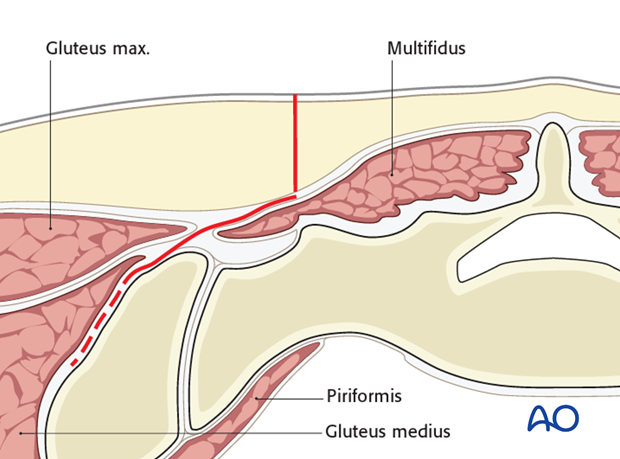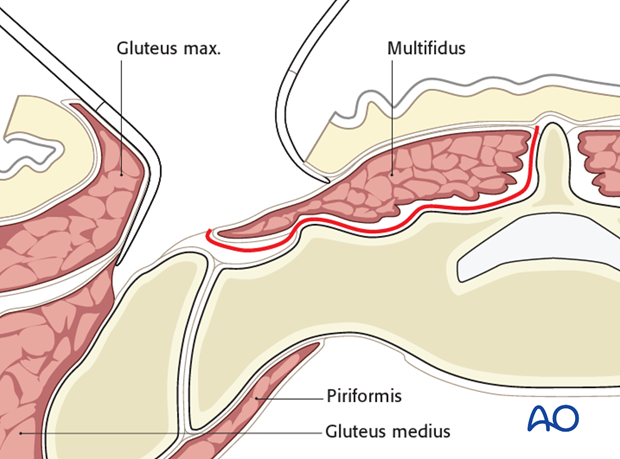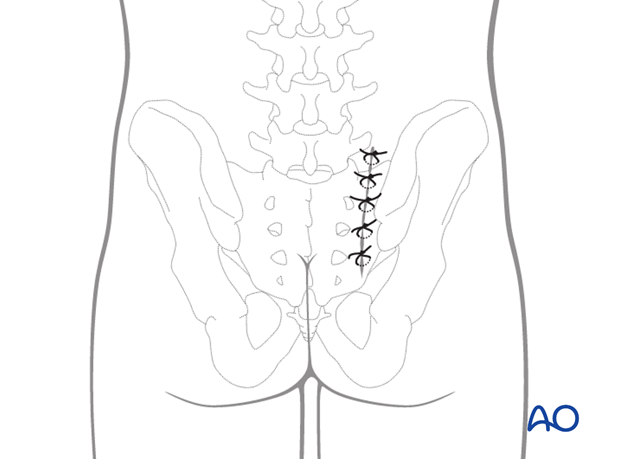Posterior paramedian approach to the sacrum
1. Introduction
The posterior paramedian approach to the sacrum provides access to the:
- posterior ilium
- sacroiliac joint
- posterior surface of the sacrum

2. Skin incision
A straight vertical incision can be made. The skin incision starts 1-2 fingerbreadths distal and medial to the posterior superior iliac spine (PSIS) and runs in a vertical straight line proximally (about 10-15 cm in length). The length can be extended cranially as needed to allow for spinopelvic fixation.
Note: Posterior approaches through severely contused or crushed tissue or sites of subcutaneous hematoma (Morel- Lavallée lesions) may cause significant wound healing problems.

3. Dissection
Divide the subcutaneous tissues in line with the skin incision until the gluteus maximus fascia is reached. Dissect along this fascia laterally to the iliac crest and medially to the sacral spinous processes.

Depending on the location of the fracture, the multifidus muscle can be detached from medially or laterally to expose the dorsal sacrum.
Note that in most displaced and unstable fractures, the muscle tissue is disrupted at the site of the fracture, thus providing access directly to the injury site.

4. Closure
Reattach the gluteus muscles to the fascia flap, over the posterior ilium.
Close the subcutaneous tissues and skin in layers.













